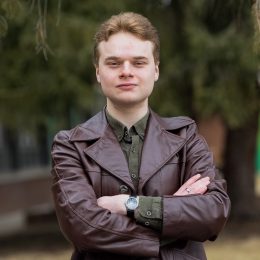
There are, in my experience, two kinds of documentaries. The first type is what anyone would think of when hearing the word “documentary” — a 45-minute to an hourlong film where an old guy sits in a chair and talks about something amongst some b-roll shots. I mean no disrespect to the people filming these documentaries, but this is a dull way of telling history and there exists a very good alternative to this cliche, one where history can be better taught and understood by sidestepping narration altogether.
The way some documentary formats work without narration is through the use of title cards followed by a brief description that gives the viewer context. Then, the subject of the film is shown step by step through archive footage, memoirs and interviews done at the time period of the subject. There is never a point where someone narrates the action or speaks to interpret the story — what is on the screen to see “is” the story itself.
Two of my all-time favorite documentaries use this style. The first one is “LA 92” by National Geographic. As a history documentary, it is superb in its editing and theme choices, as every event covered by the film is linked together in an excellent “cause and effect” chain. It is also very good at bringing in all the perspectives on the actual Los Angeles Riots that occurred more than 30 years ago — the motivations of the Black community, Koreans, the police and Rodney King, who is at the center of the unfolding chaos.
The cinematic beauty of “LA 92” is that the archive footage used for it almost becomes “alive.” You watch the series of recordings and interviews as if you are sitting at your home and watching the 6 o’clock news as Los Angeles is actively burning. The sense of terror and panic is real, and you feel both helpless and morbidly curious. The key principle is to have a clear understanding of the sequence of events, their relative impact on the subject and the perspectives of everyone involved. Even a documentary that “speaks for itself” can still twist reality by cherry-picking events to cover. A systematic analysis of a subject is necessary to make, at the very least, an honest documentary.
My second favorite just came out last year, but I am hopeful it will leave a lasting impact. In fact, “Soundtrack to a Coup d’Etat” by director Johan Grimonprez was so successful as a documentary that I hope it sets a trend in documentary production for many years to come. Usually, when someone “spoils” a movie for you, it is because they told you what happens in the end. You know what to expect, so the element of surprise is taken away. Spoiling this documentary for you would happen if I told you in detail just how beautifully music and history are blended together.
The film is both figuratively and literally a soundtrack. Figuratively, because it ties together the history of Congo’s independence from Belgium like the moving tracks of a playlist — there are the fast-moving tunes of jazz, somber tunes for impending crises, a loud orchestra for upheaval and slow tunes for the moments of revelation and disaster. One theme is followed by another, and the story reinvents itself constantly. It is also literally a soundtrack because instead of a narrator doing the explanation, rhythms and songs speak for themselves while you see what figures like Dwight D. Eisenhower, Nikita Khrushchev or Patrice Lumumba had to say about themselves in memoirs in this “jukebox documentary.”
The method of not needing a narrator works very well because the free audio and visual space necessary for a narrator is instead filled with more music, more history and more art. Naturally, any subject that is before the recording of history or sound is going to be hard to turn into a film like these examples. Nevertheless, there is still a century of events and footage to cover in this style, so the method has a lot of free space to roam for experimentation.
These two documentaries are definitely worth watching just for the experience one can get from them. Setting the educational value aside — and trust me that they are nonetheless very educational with their content — these films use artistic creativity to their highest levels. As works of motion picture, they certainly create a new world of possibilities.
Not having narrators allows history to speak for itself and makes our position as observers all the more meaningful while watching these films. We, the audience, are presented with an intellectual challenge to break barriers made of prejudice and think of history by embracing its rough edges and ugliness. My hope for your experience is that this is a way for you to learn not only about history but “from” it as well.
Deniz Gulay is a sophomore double-majoring in history and Russian.
Views expressed in the opinions pages represent the opinions of the columnists. The only piece that represents the view of the Pipe Dream Editorial Board is the staff editorial.


